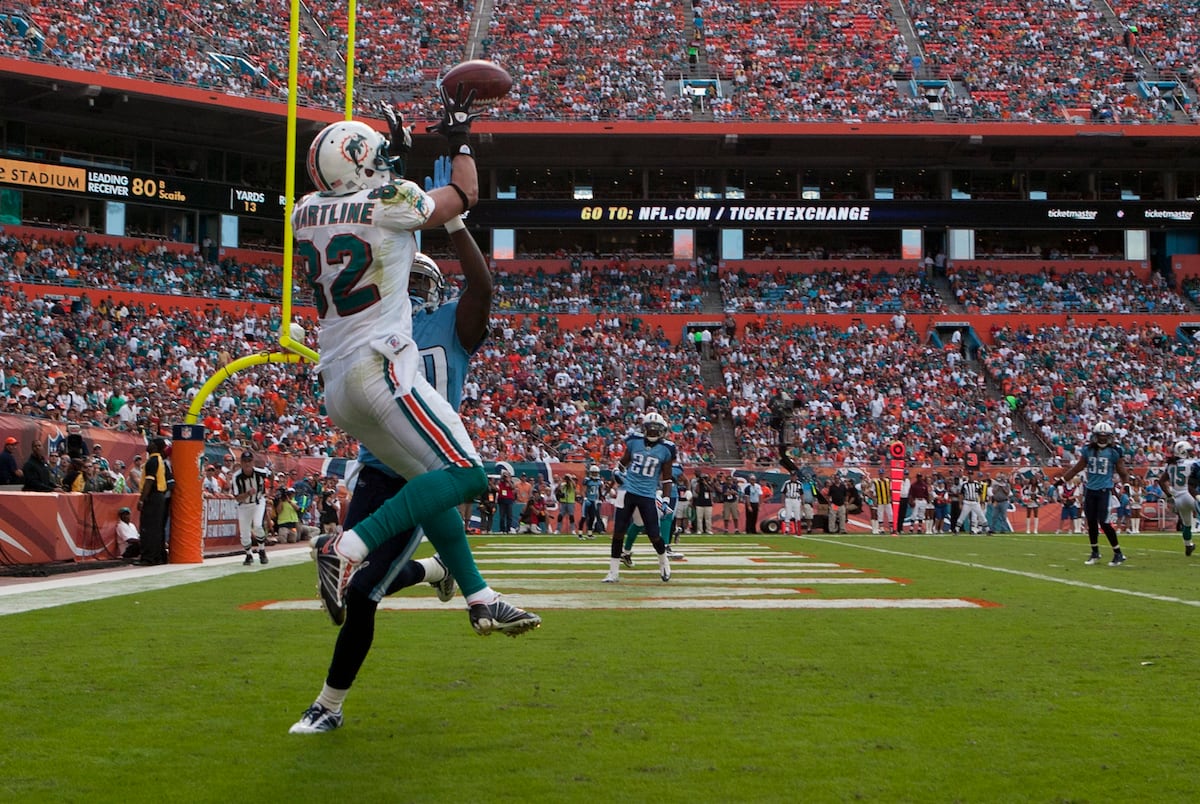The outside corner is in straight man coverage on the 'X' receiver while the space-backer (S), middle linebacker (M), and field safety (F) are playing zone over the two slot receivers. Either running the 'Y' or 'H' receiver on a seven route while the other two run quick in-routes gives the offense a chance to get a good match-up on a potential. The wide receiver position was hit hard by departures following the 2017 college football season, but there’s still plenty of talent on campus for ’18. Tier 1 receivers are borderline unguardable at the college level and are potential NFL WR1s and WR2s. This class, in particular, is ridiculous. Laviska Shenault, who played just over half of his. Quarterbacks always attract the most attention in college football, but the best signal-callers right now have a tremendous wide receiver shredding secondaries in 2019. The wide receivers include Alabama's Jerry Jeudy and Purdue's Rodale Moore. The 10 best college football wide receivers and five best tight ends for the 2019 season.
Every great quarterback has had one or multiple great receivers to build a career with. It’s like having spaghetti and meatballs or peanut butter and jelly—one doesn’t really make sense without the other; they just work well as a team. Becoming a wide receiver college prospect means understanding your role in the offense.
Know Your Role
Are you a big play receiver who is constantly running seams and deep posts? Are you a possession receiver always depended on for your sure hands? Due to stature and speed, are you more of a slot receiver who’s not afraid of going across the middle and able to play well in space? These questions become more difficult to answer if your high school offense is run oriented. It’s possible in this instance you have developed a knack for run blocking like former University of Georgia and Pittsburgh Steeler Hines Ward.
The idea of asking yourself these questions comes down to knowing which aspect of yourself you can sell or market to a coach. Obviously if a coach employs an option-based offense, his need for possession receivers is less than one who employs a West Coast offense. The option coach is likely to look for run-blocking receivers who happen to be able to catch while the West Coast coach recruits the complete opposite.
You learn these things by watching games of the teams you are interested in playing for and researching the history of the coach and the program. If this isn’t something you are already doing, you should start as soon as possible.
College Slot Receivers Games
Catch the Ball
College coaches recruit wide receivers that can catch the ball, a given in any system. The popular phrase “cornerbacks are former wide receivers that cannot catch the ball” exists for a reason. Many high school receivers stand a chance of position conversion because their hands aren’t adequate. To prevent this from happening means honing in on your hand-eye coordination. The only way to perfect catching the football is to constantly be working with someone throwing you the ball.

Basketball players become great by not leaving the gym until they shoot x-amount of free throws; I suggest adopting a similar strategy and not leave the field until you have caught x-amount of footballs in different fashions. These fashions can be face-on, back turned, over the shoulder, in route, etc.
Another aspect of catching the football that college coaches look for in a prospect is whether they catch the football with their hands or against their body—the latter being a huge red flag. Coaches want athletes to have extension away from their bodies, an all-hands catch, quick control, and fast tuck of the ball so it’s not to be dislodged by a defender.
Build a Foundation with Footwork
Potential college receivers are evaluated on their current footwork and ability to adapt to new footwork. Your footwork determines the types of routes you run; the routes you run determine the timing between you and the quarterback and ultimately affect whether you’ll have the ball thrown your way. It is well-known that a high school wide receiver’s footwork won’t be equal to that of a current college player, but is it close? This is the area recruits should strive for.
Try filming your feet when you run routes at practice. Are your plants firm? Are your cuts precise, or do you round them? Do you fire off the line of scrimmage, or do you come off slow? Using cones and agility ladders will help in route definition and footwork.
Power and Explosion
Top College Football Slot Receivers
With power comes explosion. As a wide receiver recruit, both power and explosion are traits you should hope to possess. Power allows you to outmuscle an opponent for the ball and yardage. Power also allows you to push around an opponent during blocking assignments. Explosion allows you to create separation, whether vertical or horizontal, so that plays can be made. Both are found through hard work in the weight room and on the track during off-season workouts. Squats and power cleans help build muscle for explosion. Running sprints—400s, 200s, 100s, and 40s—help to build speed and explosion. Running sprints with sleds or parachutes helps to increase that built speed and power.
College Slot Receivers Radio
Do you have any questions about playing at the next level? Leave them in the comments section below or connect with us on Facebook, Twitter, or Google+!